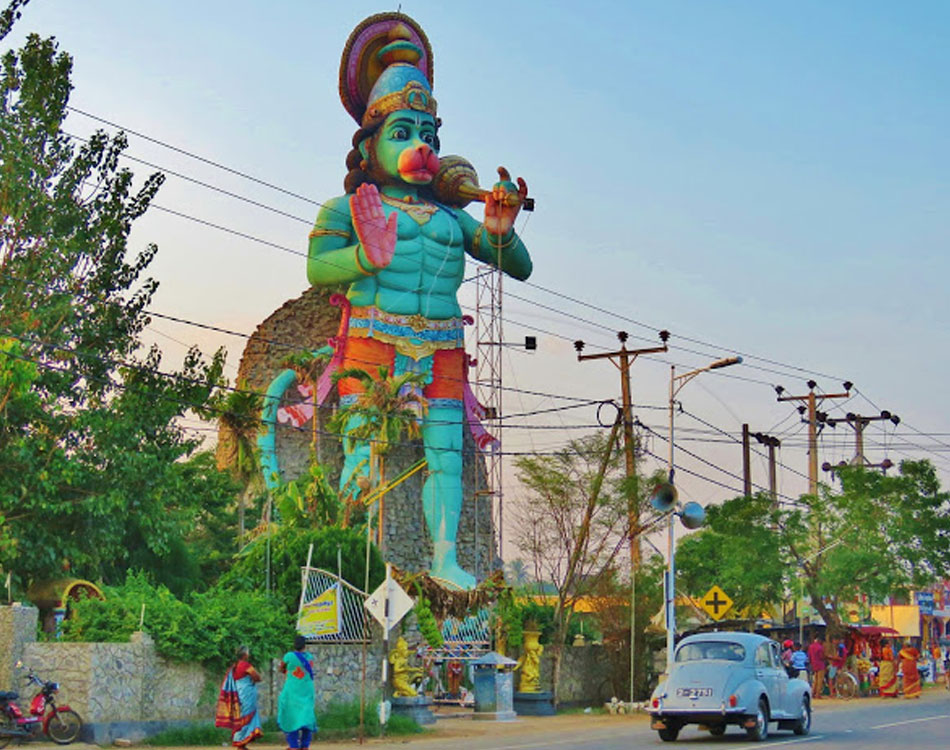JAFFNA CITY TOUR
Majority of the city’s population are Sri Lankan Tamils, although there were a significant number of Sri Lankan Moors, Indian Tamils and Sinhalese present in the city in the past. Most Sri Lankan Tamils are Hindus followed by Christians, Muslims and a Buddhist minority. The city is home to a number of educational institutions established during the colonial and post-colonial period. The city is anchored by the Jaffna fort rebuilt during the Dutch colonial period.
Reaching Jaffna
Jaffna city can be reached from Colombo via the A9 main motor road. The distance from Colombo to Jaffna is approximately 404km from Colombo to Jaffna along the A3 main road, in view of the road conditions in the Northern Province, it takes over 10 hours of drive time.
History of Jaffna
Nagadipa or Naka-diva was supposedly the ancient name given to the Jaffna peninsula. Nagadipa is first mentioned in the Pali chronicles of Sri Lanka in connection with the story of the Buddha’s second visit to the island in the 6th century B.C. Mahavamsa (ch.1.vv 44-70) narrates that the Buddha during this visit made peace between two Naga kings of Nagadipa who were about to wage war over a gem-set throne.
Jaffna Fort
Until it was ravaged by the former civil war, the Jaffna Fort was the best-preserved fort in Sri Lanka and contained a fine Reformed Dutch Church, which is now also in ruins. After the siege of 1658 which endured for three and a half months, the Dutch demolished the damaged and out of date square fort of the Portuguese and in its place built their ideal fortress.
Jaffna Library
The foundation stone of the library was laid on the 29th of March 1955 but its actual construction began only in 1958 and was completed in 1960. The library, built in the Mogul style, was destroyed with its valuable books, burnt by a fire lit by an uncontrolled mob which arrived by bus in the evening of the 1st of June 1981. It is believed that about 97,000 books, the entire collection was lost.
Nallur Kandasamy Temple
It is here, in July-August (26 days before the August new moon) that the most important festival of the Jaffna Penin¬sula is held. The deity which is kept in the temple is placed on its chariot to make its annual procession along the roads surrounding the temple.
The original temple is believed to have been built by King Bhuvaneka Bahu in the period 1450 -1467. It was levelled to the ground in 1620 by Capt. Filipe de Oliveira after a full-scale battle between the Portuguese troops and the Jaffna forces which started with a simple brawl, and in which the latter were defeated. The present temple at Nallur originated during the time of the Dutch. Initially, it was a place to hold Kandapuranam recitals.
Jaffna Archaeological Museum
The construction started in 1976 and was completed about 10 years later according to the local staff. Many pieces and artefacts are found on the dusty shelves and in the dark Galleries of this small but charming museum. There is the fragment of a torso which could be the same Pieris describes in his papers. There is also a standing Buddha statue in good condition which was discovered in 1969 at Puttur, east of Jaffna.
Day Tours
See more
See less
Round Tours
See more
See less
Things To Do
See more
See less

